Nginx For Beginners
Performance
Demo Compression
Learn how to optimize your Nginx reverse proxy by enabling gzip compression. We’ll demonstrate loading large JPEG files before and after gzip, measure performance gains, and configure a complete server block with SSL, caching, rate limiting, and security headers.
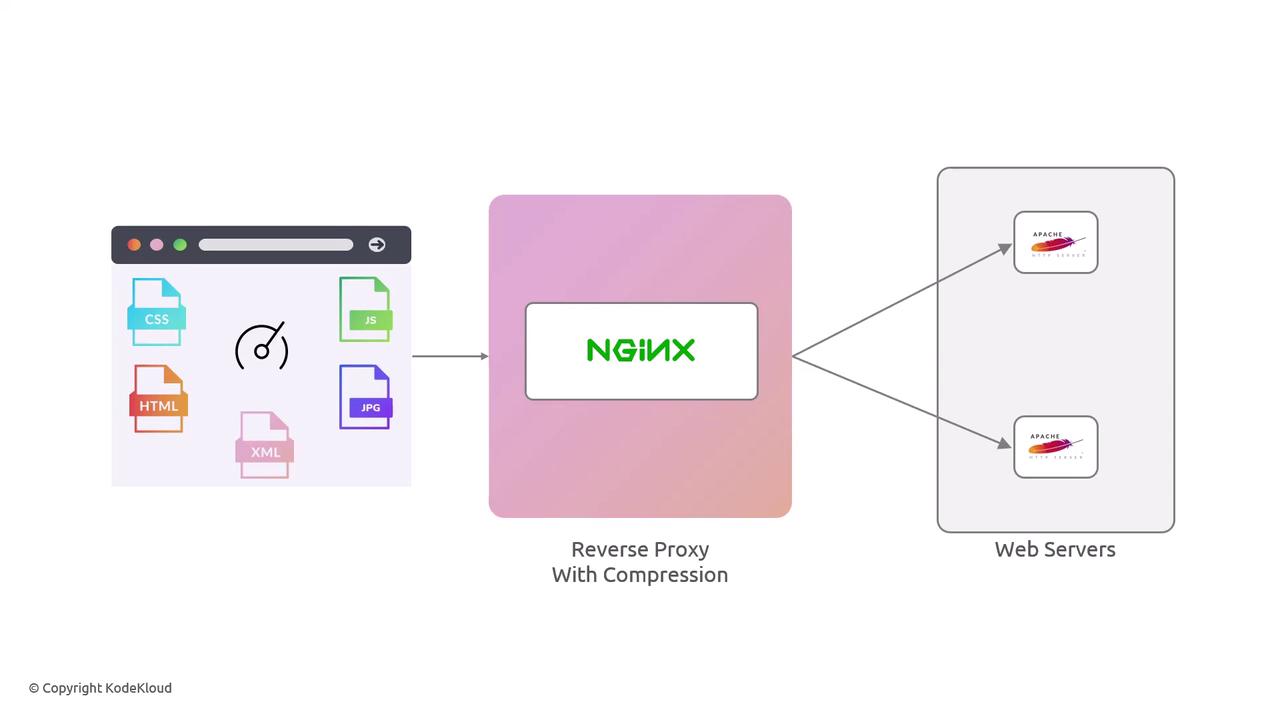
1. Prepare Large JPEG Files
By default, JPEGs are already compressed and benefit little from gzip. For demo purposes, inflate them to 20 MB:
Note
Inflating JPEGs simulates slow-loading assets. In production, you typically gzip text-based resources only.
# Move into the images directory
cd /var/www/html/images/
# Check original file sizes
ls -lh *.jpg
# Inflate each file to 20 MB
for file in *.jpg; do
fallocate -l 20M "$file"
done
# Confirm new sizes
ls -lh *.jpg
2. Monitor Apache Access Logs
Keep an eye on incoming requests while you load resources:
tail -F /var/log/apache2/access.log
Load the site in your browser or via curl to see entries in real time.
3. Test Without gzip Compression
Open your web page in Incognito or Private mode. In Chrome DevTools:
- Switch to the Network tab.
- Reload the page.
- Observe image requests taking 4–5 seconds each.
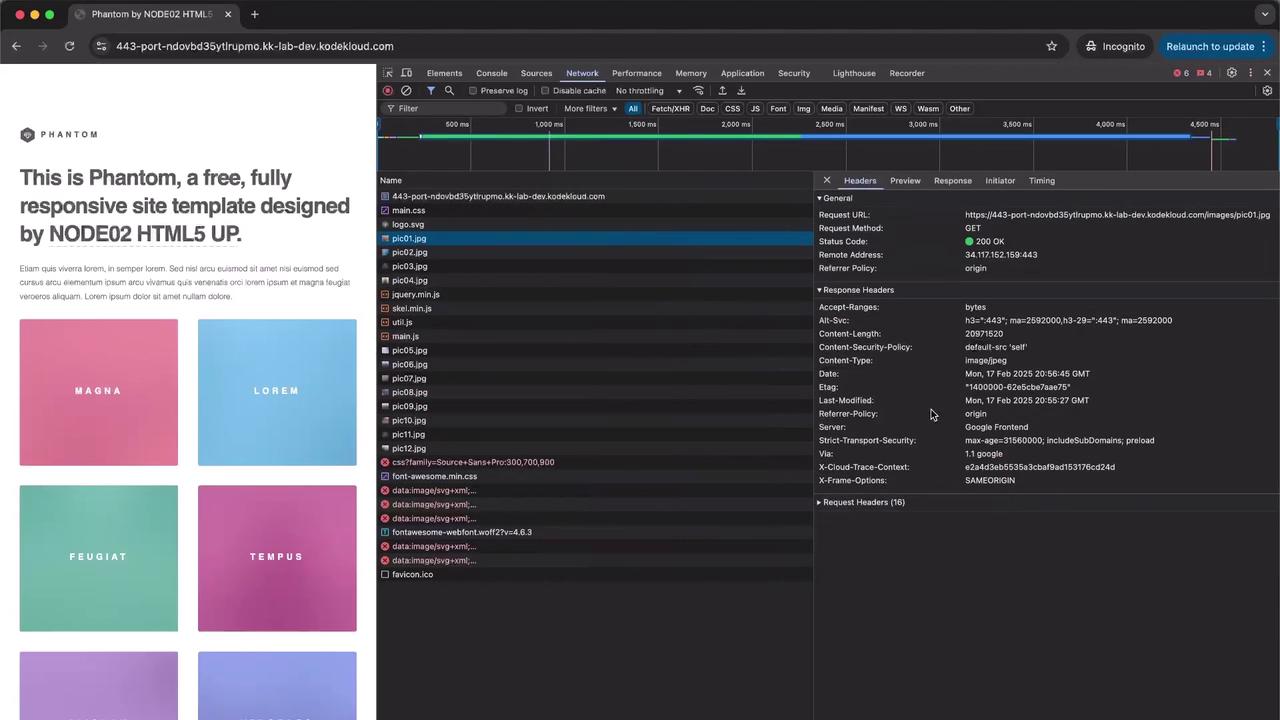
In Firefox’s network panel, note that the Transfer Size equals the full ~20 MB:
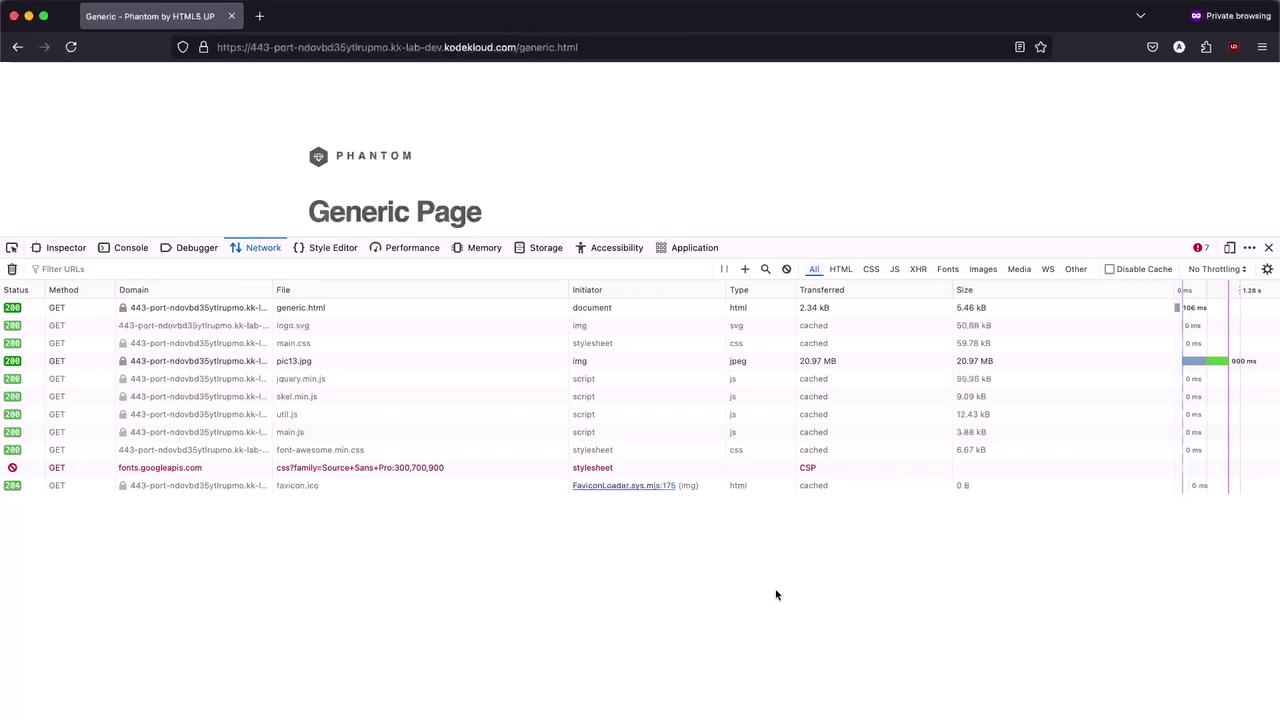
4. Enable gzip in Nginx
Edit /etc/nginx/nginx.conf (or your include file) to add gzip settings under the http block:
http {
# ---------------------------
# Gzip Compression Settings
# ---------------------------
gzip on;
gzip_vary on;
gzip_proxied any;
gzip_comp_level 6;
gzip_buffers 16 8k;
gzip_http_version 1.1;
gzip_types
text/plain
text/css
application/json
application/javascript
text/xml
application/xml
application/xml+rss
text/javascript
image/jpg
image/jpeg
font/ttf
font/eot;
# ... other HTTP-level settings ...
}
Test and apply the configuration:
nginx -t
systemctl restart nginx
Warning
Always test your configuration (nginx -t) before reloading Nginx to avoid downtime.
5. Verify Compression Performance
Reload the page in Chrome DevTools → Network → All. You should see image loads in milliseconds:
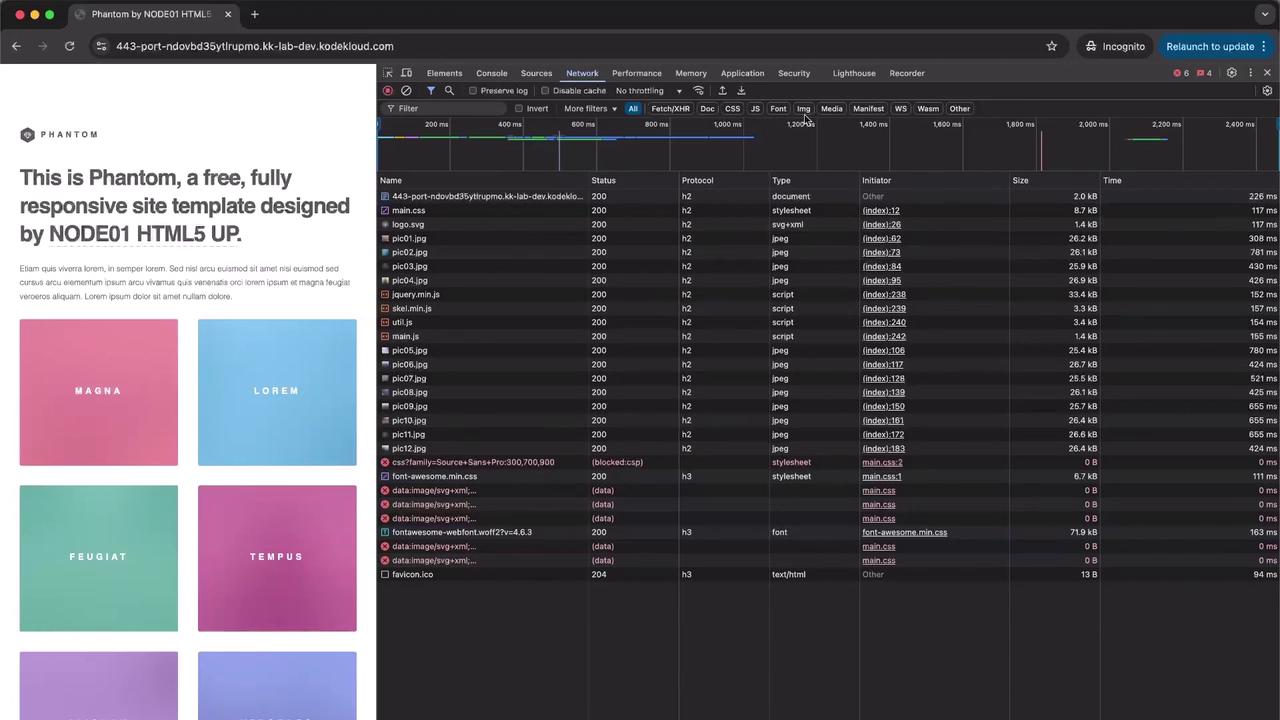
Click any resource and inspect the Response Headers for:
Content-Encoding: gzip
In Firefox, confirm that Transfer Size is significantly lower and load times drop to the low hundreds of milliseconds.
6. Complete Example: Nginx Server Block
Below is a full Nginx configuration combining upstream proxy, SSL, security headers, gzip, caching, and rate limiting:
# Define backend servers
upstream example {
server node01:443;
server node02:443;
}
# Redirect HTTP to HTTPS
server {
listen 80;
server_name example.com;
return 301 https://$host$request_uri;
}
# Main HTTPS server
server {
listen 443 ssl;
server_name example.com;
ssl_certificate /etc/ssl/certs/example.com.pem;
ssl_certificate_key /etc/ssl/certs/example.com-key.pem;
root /var/www/html;
index index.html index.htm;
# Security headers
add_header Strict-Transport-Security "max-age=31536000; includeSubDomains; preload";
add_header X-Frame-Options "SAMEORIGIN";
add_header Content-Security-Policy "default-src 'self'";
add_header Referrer-Policy "origin";
add_header Cache-Control "public, max-age=3600";
# Rate limiting
limit_req_zone $binary_remote_addr zone=req_limit_per_ip:10m rate=1000r/m;
limit_req_status 429;
# Proxy cache configuration
proxy_cache_path /var/lib/nginx/cache levels=1:2 keys_zone=app_cache:10m;
proxy_cache_key "$scheme$request_method$host$request_uri";
proxy_cache_valid 200 302 10m;
proxy_cache_valid 404 1m;
# Gzip settings (same as above)
gzip on;
gzip_vary on;
gzip_proxied any;
gzip_comp_level 6;
gzip_buffers 16 8k;
gzip_http_version 1.1;
gzip_types
text/plain
text/css
application/json
application/javascript
text/xml
application/xml
application/xml+rss
text/javascript
image/jpg
image/jpeg
font/ttf
font/eot;
location / {
proxy_set_header Host $host;
proxy_set_header X-Forwarded-For $proxy_add_x_forwarded_for;
proxy_set_header X-Forwarded-Proto $scheme;
proxy_cache app_cache;
proxy_pass https://example;
}
location /admin {
auth_basic "Restricted Access";
auth_basic_user_file /etc/nginx/conf.d/.htpasswd;
}
}
7. Further Reading: HTTP Headers
Deep dive into HTTP headers for security, caching, CORS, and more. Useful references:
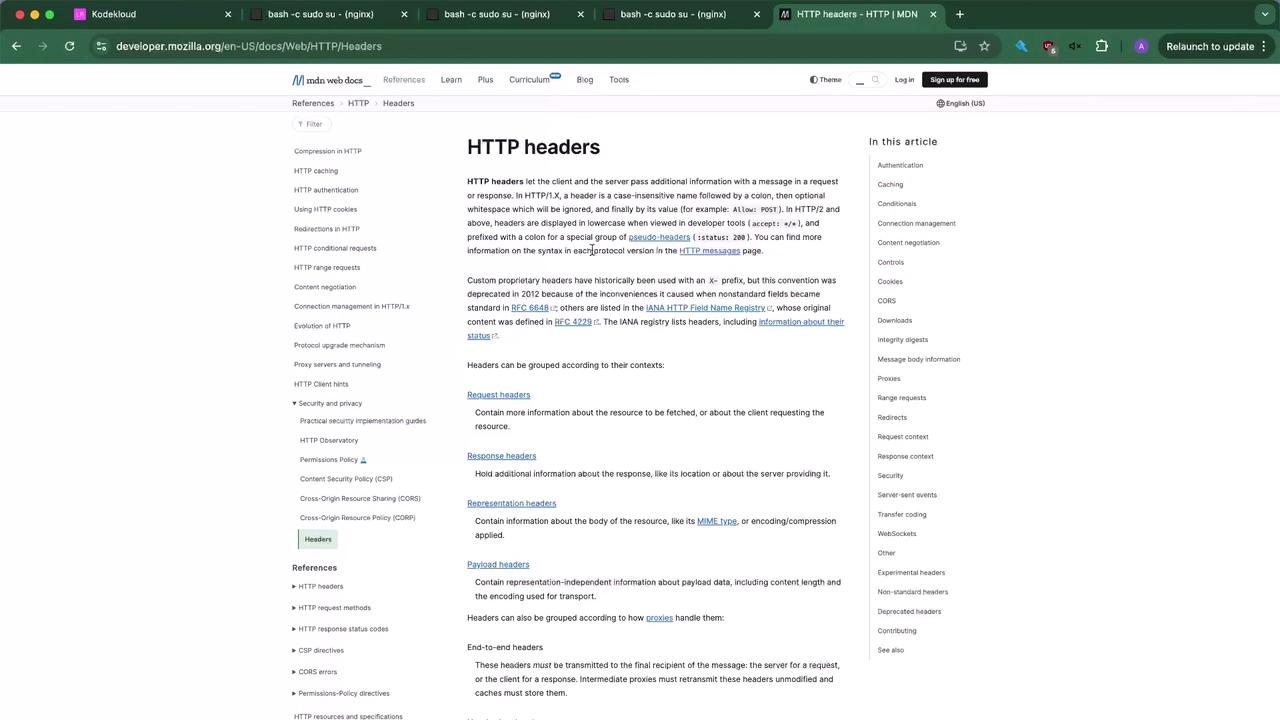
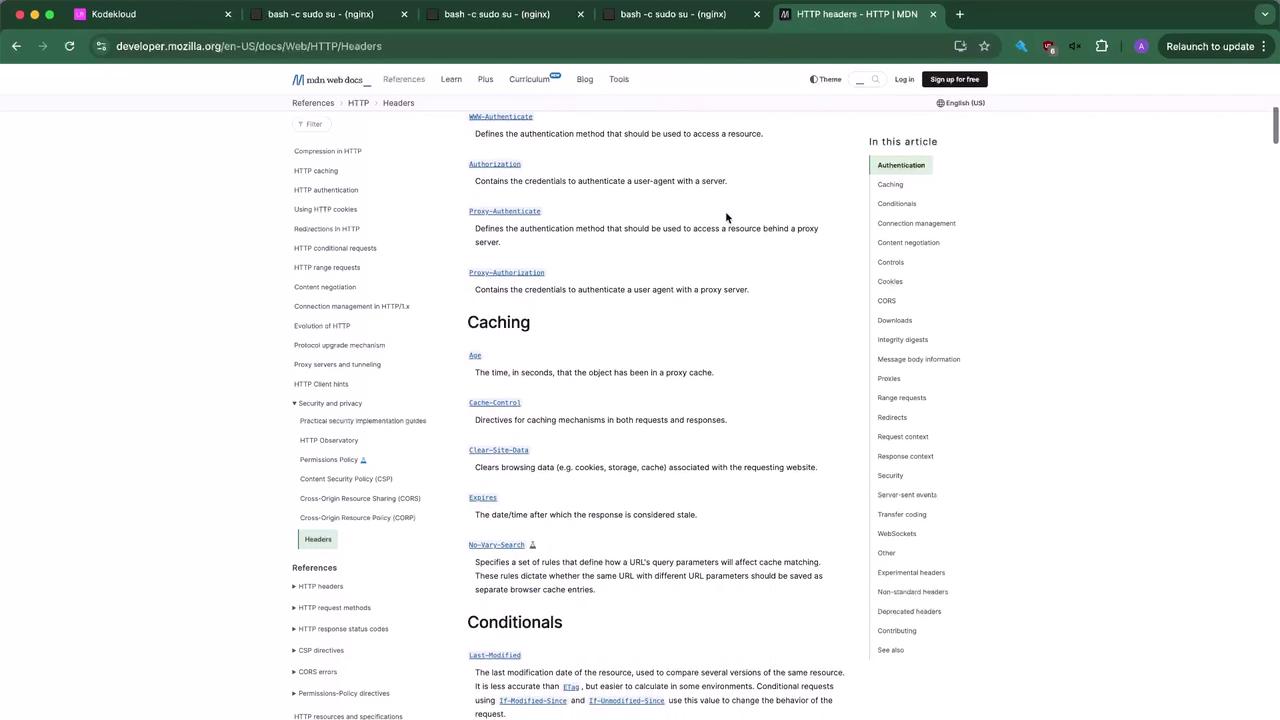

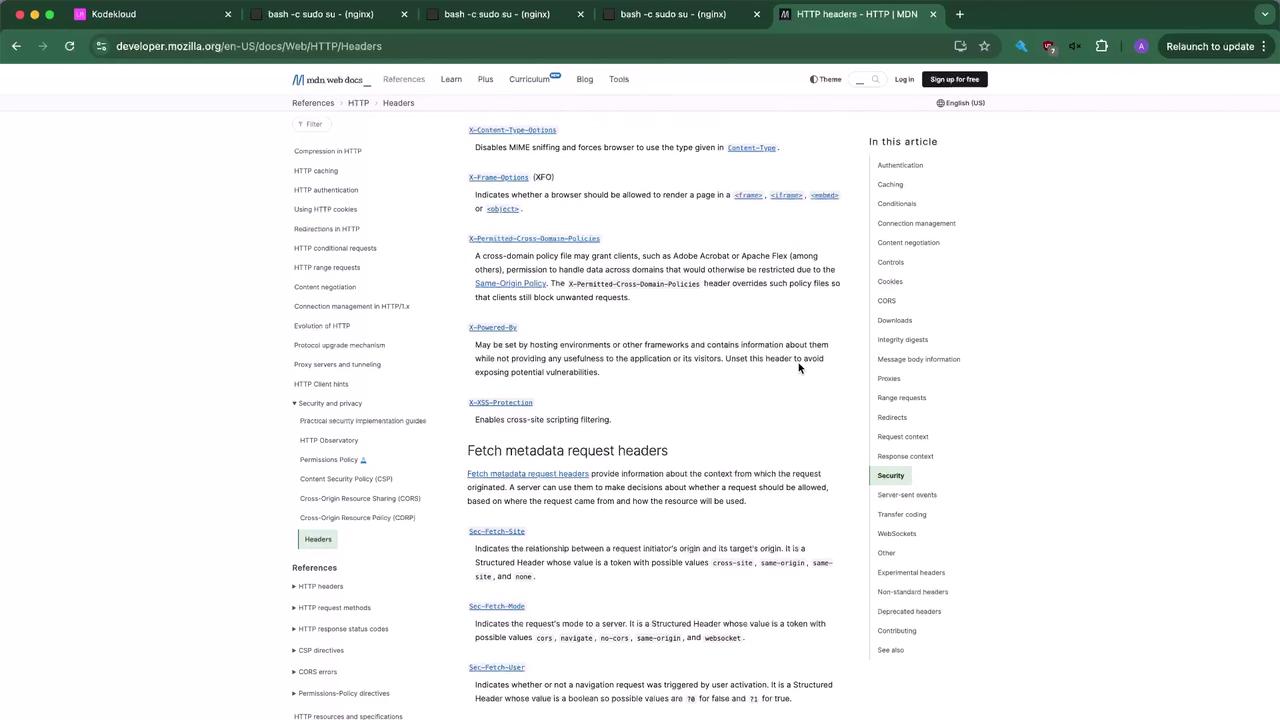
Watch Video
Watch video content
Practice Lab
Practice lab